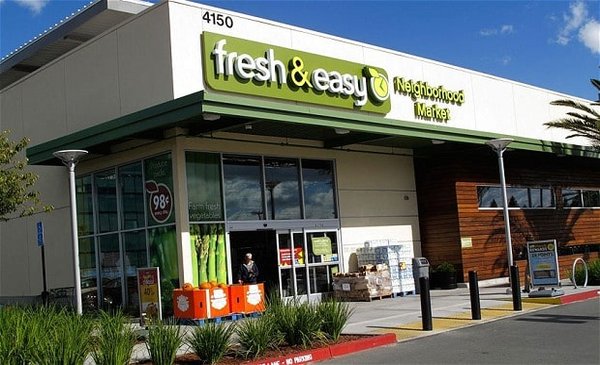
When Tesco entered the US 18 months ago with Fresh & Easy, most marketers had a Natalie Imbruglia moment. On the one hand, this was Britain’s best marketing company with an unfailing track record for consumer-oriented success. But on the other, the US has proven a graveyard for big British retailers for decades. M&S, Sainsbury’s, Laura Ashley – they came, they opened, and they all died on its soil.
Tesco, though, isn’t like other bog-standard retailers. It approached the US like a true marketing purist. If you have any formal training in marketing – which I’m sure most Branding Strategy Insider readers do – you will recognize textbook perfection in every step of the Fresh & Easy journey.
First there was extensive qualitative research to understand the market, using focus groups and ethnographies of US families. This led to quantitative research in which propositions were tested on representative samples.
Tesco rigged up a mock store in California in which alternative offerings could be assessed by samples of US shoppers specially flown in. This led to clear behavioral segmentation and the targeting of segments that Tesco felt were underserved by US retailers. Lastly, Tesco developed a positioning for its target segments that would drive every element of its new store.
It’s a recipe for guaranteed commercial success. Provided, of course, the initial research on which everything is predicated is accurate.
There have been rumblings in recent weeks, fueled by Tim Mason, the man in charge of Fresh & Easy, that Tesco’s insights into the US shopper were only partially correct at best. Apparently the ethnographic research that fueled much of the Fresh & Easy concept was derived from observational data from consumers’ kitchens. But Mason now accepts that, had the garages of these households also been explored, they would have uncovered a different situation: giant freezers stuffed with produce purchased on special offer.
If your research is off, so is everything else, including brand positioning. So it’s no surprise that Mason has now conceded that the original mid-tier price positioning of Fresh & Easy is also questionable. He recently confessed: ‘We may have assumed that certain elements of the Fresh & Easy brand would do the work for us and we would not have to go down and dirty on price. That may have been a mistake.’
Gulp. It’s one thing to compete on price here in England. But going mano e mano in a price war against Wal-Mart on its home turf is possibly the least palatable proposition on Earth.
To be fair to Mason and his team, even the best retailers are not famed for their qualitative understanding of the market. Yes, thanks to Clubcard data, Tesco knows almost everything about consumers: who, what, when, how much and where. But the essential thing missing from this list is ‘why?’ While Tesco can certainly predict the sales of bananas on Finchley Road on Tuesday mornings to working mums – it has not got the faintest clue why bananas sell so well to this group.
Yet this kind of qualitative insight is exactly what is needed for the successful launch of a brand; until it gets up and running, and then Mason can use his in-store quantitative data from his EPOS systems to measure, alter and test the Fresh & Easy offering.
The billion-dollar question for Mason is whether the initial launch strategy was close enough to the US consumer bullseye to allow him to now make the subtle alterations to the strategy necessary for ultimate success.
30 Seconds On…Fresh & Easy
- Tesco opened its first Fresh & Easy stores in the US in November 2007. It now operates more than 100 of the outlets in Arizona, California and Nevada. Tesco chief executive Sir Terry Leahy reportedly wants to open 1000 Fresh & Easy stores in the country.
- The shops were criticized before they even opened after a report by the Occidental College in Los Angeles questioned Tesco’s treatment of staff and its environmental record.
- When asked about the potential fallout of Fresh & Easy failing in the US, its chief executive, Tim Mason, has admitted: ‘It would be deeply embarrassing for me, but I am sure that Tesco would survive it – even if my career wouldn’t.’
- In March 2008, Tesco went on the defensive after City analysts suggested the Fresh & Easy business was missing sales targets by as much as 70%.
- In January, Fresh & Easy began making customer announcements over social-messaging service Twitter.
The Blake Project Can Help: The Brand Positioning Workshop
Branding Strategy Insider is a service of The Blake Project: A strategic brand consultancy specializing in Brand Research, Brand Strategy, Brand Licensing and Brand Education




